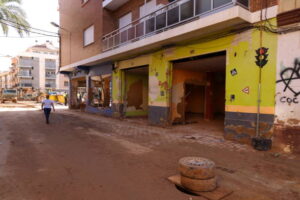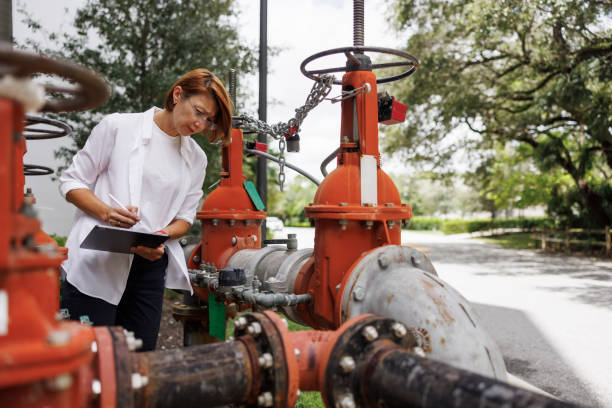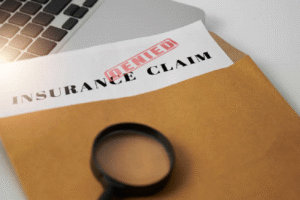Thinking about building or buying in a flood‑prone area? Don’t skip the Flood Risk Assessment (FRA). Not only is it often a legal must, but it’s also how you protect your investment—and everyone who’ll use the property—from costly flood damage.
This guide walks you through what an FRA is, when and why you need one, and how to produce one that stands up to regulators’ scrutiny. You’ll come away confident—and well‑prepared—to navigate planning approvals, insurance questions, and property sales.
1. What Exactly Is a Flood Risk Assessment?
A Flood Risk Assessment (or FRA) is more than just paperwork. It’s a comprehensive evaluation of how likely your site is to flood and the measures you’ll take to prevent or minimize damage.
Think of it like an insurance plan: It flags risks and sets out solutions. It’s a grounding document for architects, engineers, and planners—and if done well, it boosts your chances of a smooth planning process, cheaper insurance, and greater buyer confidence.

2. When Do You Actually Need an FRA?
Here are some typical scenarios that trigger the need:
-
Your site falls in Flood Zone 2 or 3, meaning medium to high flood risk areas.
-
The development is over 1 ha in Flood Zone 1 (even though that zone is low risk).
-
You’re changing the use of land or buildings—such as converting warehouses into homes.
-
The site is near water: riverbanks, tidal zones, or surface‑water hotspots.
-
Local planning rules demand it as part of your application.
Bottom line: If water could be an issue—or if regulators suspect it might be—you’ll need an FRA. Better to identify that early rather than get hit with delays later.
3. Step-by-Step: How to Do a Flood Risk Assessment
Here’s your roadmap to a solid FRA report:
Step 3.1 – Find Your Flood Zone 📍
Start by locating your site on official flood maps:
-
In the UK? Try the Environment Agency’s Flood Map for Planning.
-
In the US? Or elsewhere? Check FEMA, regional water authority maps, or local planning resources.
Flood zones generally break down like this:
-
Zone 1 = Low risk
-
Zone 2 = Medium risk
-
Zone 3a/3b = High risk or functional floodplain
Knowing your zone determines what level of assessment and mitigation is required.
Step 3.2 – Spot All Flood Sources
Don’t just think about rivers. A full flood‑risk audit identifies sources like:
-
Fluvial (river) flooding
-
Pluvial (surface water) flooding
-
Groundwater rise
-
Sewer backups
-
Coastal or tidal surges
You might be 50 m from the sea—but when a storm surge rolls in, you’ll want to know how water reaches your land.
Step 3.3 – Dig into Local Flood History
Check your local council, environment agency, or meteorological services for historical flood records, including:
-
When floods occurred
-
Intensity and depth
-
Duration and damage caused
This data paints a clear picture of what your site has faced before—and what it might see in the future.
Step 3.4 – Study the Land and Drainage
Bring in a topographical survey. You’ll need to understand:
-
Ground levels and slope
-
Natural water channels and ponding areas
-
Drainage behavior, including nearby outfalls or culverts
This is critical to decide where to place buildings, access roads, and which parts of your site may need special attention.
Step 3.5 – Assess Flood Depths and Impact
With your data in place, you’ll measure:
-
Potential water depth and how fast it might flow
-
Effects on your planned structures and materials
-
Risks to people, pets, and assets
This could involve hydraulic modeling or expert consultations to be precise—but a thorough risk map is essential to move forward confidently.
Step 3.6 – Plan Clear Mitigation Steps 🛠️
Once risks are mapped out, propose realistic strategies:
-
Raise floor levels above projected flood heights
-
Install Sustainable Drainage Systems (SuDS)—permeable paving, swales, retention ponds
-
Use flood-resistant design—barriers, reinforced walls, non-porous floors
-
Create buffer zones—earth bunds or green space to hold water
A mix of structural and landscape solutions usually works best.
Step 3.7 – Account for Climate Change
It’s no longer enough to plan for past flood patterns. Resilience means:
-
Allowing for higher sea levels
-
Expecting increased storm intensity
-
Planning pipelines and drainage to handle future volumes
A sound FRA usually projects up to 100 years ahead—don’t skip it.
Step 3.8 – Pull Together the FRA Report
Your final report should include:
-
Site maps and flood‑zone classification
-
Full risk analysis (sources, depth, velocity, history)
-
Your mitigation proposals
-
Evidence: maps, survey results, reports, climate projections
Submit this with your planning application. A well‑done FRA helps avoid delays—and strengthens your case for approval.

4. Who Should Prepare Your FRA?
-
Smaller, low-risk sites may allow for an in-house FRA—if you have the expertise.
-
Most projects benefit from a specialist—think flood‑risk consultants or civil/hydrological engineers.
The up‑front cost of professionals often pays for itself by avoiding errors, pushbacks, or redesigns.
5. Watch Out for These Common Pitfalls
Even experienced developers slip up. Watch for:
-
Ignoring surface‑water risks, assuming river flood is the only issue.
-
Using outdated maps or data—always pull the latest info.
-
Skipping mitigation details—a report without clear action is just theory.
-
Failing to factor in climate change—that’s a red flag for most planning bodies.
Getting these wrong can cost time, money—and your peace of mind.
6. Why It’s Worth Doing Right
Completing a thorough FRA delivers real benefits:
-
Faster, smoother planning approvals
-
Lower insurance premiums (and better cover)
-
Reduced risk of future damage
-
Better tenant/buyer confidence—you’re seen as responsible and prepared
-
Legal compliance (e.g. UK – NPPF, US – FEMA/Local ordinances)
This isn’t bureaucracy—it’s smart property stewardship.
7. Next Steps: What You Can Do Today
-
Check your flood zone (via local or national flood maps)
-
Gather local flood history—ask your council or agency
-
Bring in a surveyor or engineer for topography analysis
-
Plan at least 3 mitigation strategies, tailored to your site’s challenges
-
Budget for climate resilience in infrastructure or materials
If you’re feeling unsure, book a consultation with a local FRA specialist—you’ll get clarity and actionable recommendations.
Final Thoughts 💡
A Flood Risk Assessment isn’t a box‑ticking exercise—it’s an intelligent approach to protect your investment, reduce risk, and show stakeholders you’ve done your homework. Whether you’re a landlord, developer, or investor, taking flood risk seriously is smart—and increasingly essential as weather patterns shift.





